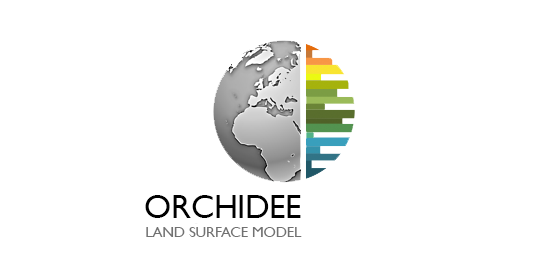| Version 6 (modified by klaurent, 6 weeks ago) (diff) |
|---|
ORCHIDEE_CAN_r2290
This version of ORCHIDEE has been used in A vertically discretised canopy description for ORCHIDEE (SVN r2290) and the modifications to the energy, water and carbon fluxes by K. Naudts, J. Ryder, M. J. McGrath, J. Otto, Y. Chen, A. Valade, V. Bellasen, G. Berhongaray, G. Bönisch, M. Campioli, J. Ghattas, T. De Groote, V. Haverd, J. Kattge, N. MacBean, F. Maignan, P. Merilä, J. Penuelas, P. Peylin, B. Pinty, H. Pretzsch, E. D. Schulze, D. Solyga, N. Vuichard, Y. Yan, and S. Luyssaert. Geosci. Model Dev., 8, 2035–2065, 2015. doi:10.5194/gmd-8-2035-2015.
Abstract
Since 70% of global forests are managed and forests impact the global carbon cycle and the energy exchange with the overlying atmosphere, forest management has the potential to mitigate climate change. Yet, none of the land-surface models used in Earth system models, and therefore none of today’s predictions of future climate, accounts for the interactions between climate and forest management. We addressed this gap in modelling capability by developing and parametrising a version of the ORCHIDEE land-surface model to simulate the biogeochemical and biophysical effects of forest management. The most significant changes between the new branch called ORCHIDEE-CAN (SVN r2290) and the trunk version of ORCHIDEE (SVN r2243) are the allometric-based allocation of carbon to leaf, root, wood, fruit and reserve pools; the transmittance, absorbance and reflectance of radiation within the canopy; and the vertical discretisation of the energy budget calculations. In addition, conceptual changes were introduced towards a better process representation for the interaction of radiation with snow, the hydraulic architecture of plants, the representation of forest management and a numerical solution for the photosynthesis formalism of Farquhar, von Caemmerer and Berry. For consistency reasons, these changes were extensively linked throughout the code. Parametrisation was revisited after introducing 12 new parameter sets that represent specific tree species or genera rather than a group of often distantly related or even unrelated species, as is the case in widely used plant functional types. Performance of the new model was compared against the trunk and validated against independent spatially explicit data for basal area, tree height, canopy structure, gross primary production (GPP), albedo and evapotranspiration over Europe. For all tested variables, ORCHIDEE-CAN outperformed the trunk regarding its ability to reproduce large-scale spatial patterns as well as their inter-annual variability over Europe. Depending on the data stream, ORCHIDEE-CAN had a 67 to 92% chance to reproduce the spatial and temporal variability of the validation data.
Code access
- See the version on the webinterface here : https://forge.ipsl.fr/orchidee/browser/branches/publications/ORCHIDEE_CAN_r2290
- Extract it on a terminal as follow, type anonymous as password:
svn co --username anonymous svn://forge.ipsl.fr/orchidee/branches/publications/ORCHIDEE_CAN_r2290 ORCHIDEE
Metadata
| DOI | http://dx.doi.org/10.14768/06337394-73A9-407C-9997-0E380DAC5595 |
| Creator | Sebastiaan Luyssaert |
| Affiliation | VU Amsterdam |
| Title | ORCHIDEE_CAN revision 2290 |
| Publisher | Institut Pierre Simon Laplace (IPSL) |
| PublicationYear | 2018 |
| ResourceType | Software |
| Rights | This software is distributed under the CeCILL license |
| rightsURI | http://www.cecill.info/ |
| Subject | Land surface model, Forest management, canopy representation |
| DataManager | Karim Ramage (IPSL) |
| DataCurator | Josefine Ghattas (IPSL) |
| ContactPerson | Sebastiaan Luyssaert (VU Amsterdam) |
| FundingReference | ERC starting grant 242564 (DOFOCO), ADEME (BiCaFF), ESA ECV land cover, and FP7/2007–2013 no. 284181-TREES4FUTURE |
